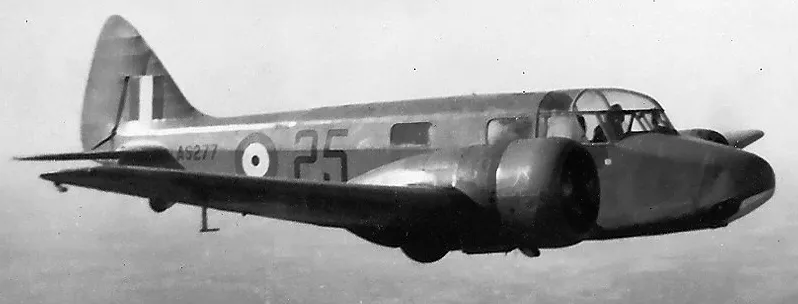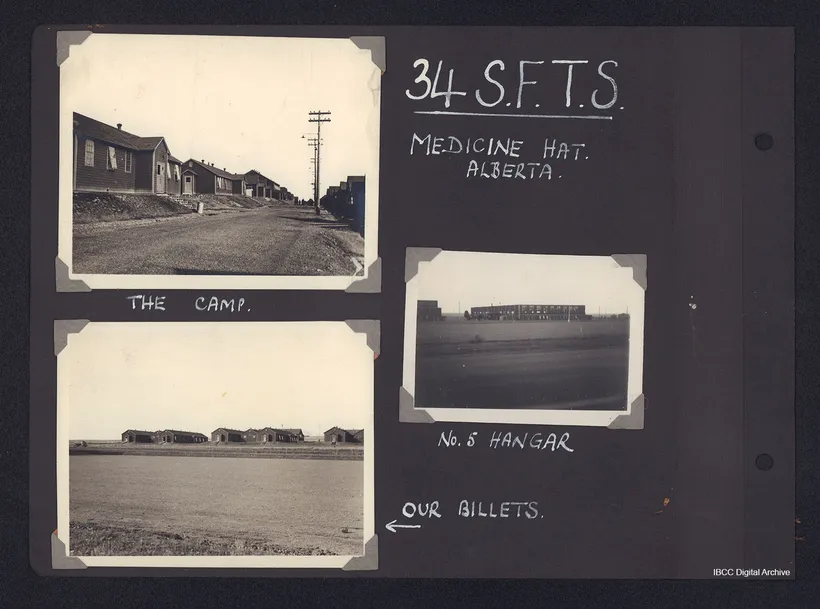Airspeed Oxford

Airspeed A.S. 10 Oxford Mk. II, RCAF (Serial No. AS277), 25, in flight over Saskatchewan, 1942.
The Airspeed AS.10 Oxford was a twin-engine monoplane aircraft developed and manufactured by Airspeed. It saw widespread use for training British Commonwealth aircrews in navigation, radio-operating, bombing and gunnery roles throughout the Second World War.
The Oxford was developed by Airspeed during the 1930s in response to a requirement for a capable trainer aircraft that conformed with Specification T.23/36, which had been issued by the British Air Ministry. Its basic design is derived from the company's earlier AS.6 Envoy, a commercial passenger aircraft. Performing its maiden flight on 19 June 1937, it was quickly put into production as part of a rapid expansion of the Royal Air Force (RAF) in anticipation of a large-scale conflict.
As a consequence of the outbreak of war, many thousands of Oxfords were ordered by Britain and its allies, including Australia, Canada, France, New Zealand, Poland, and the United States. Following the end of the conflict, the Oxford continued to achieve export sales for some time, equipping the newly formed air forces of Egypt, India, Israel, and Yugoslavia. It was considered to be a capable trainer aircraft throughout the conflict, as well as being used a general-purpose type. A large number of Oxfords have been preserved on static display. Wikipedia
CASPIR Aircraft Groups:
RCAF On Strength (821), Canadian Aircraft Losses (168)Oxford Mk. I V3268
Taken on strength at No. 1 Coastal Artillery Cooperation Flight at St. John, Newfoundland. To No. 4 Training Command on 7 May 1941, for use by No. 34 Service Flying Training School at Medicine Hat, Alberta. Category A crash at Medicine Hat at 12:40 on 3 July 1941. Starboard engine caught fire in flight, dug in a wing tip while apparently attempting a forced landing, and was completely burned out. All 2 (or 3?) occupants killed. Cause of fire believed to be fuel venting or leaking from a cracked line onto engine. Had 160:30 flying time when struck off.
1941-04-24 Taken on Strength 2019-08-20
1941-July-03 Accident: 34 Service Flying Training School Loc: Medicine Hat Names: Belcher | Simms
1941-09-01 Struck off Strength Struck off, reduced to spares and produce 2019-08-20





 School Daily Diary Entry – 1941-07-03
School Daily Diary Entry – 1941-07-03 Commonwealth War Graves Commission
Commonwealth War Graves Commission Find-A-Grave.com
Find-A-Grave.com Hillside Cemetery, Canada
Hillside Cemetery, Canada Oxford Trainer
Oxford Trainer Wikipedia Oxford Trainer
Wikipedia Oxford Trainer Harold A Skaarup Web Page
Harold A Skaarup Web Page
 RCAF.Info - RCAF Station Medicine Hat AB
RCAF.Info - RCAF Station Medicine Hat AB Bomber Command Museum Of Canada - 34 SFTS
Bomber Command Museum Of Canada - 34 SFTS